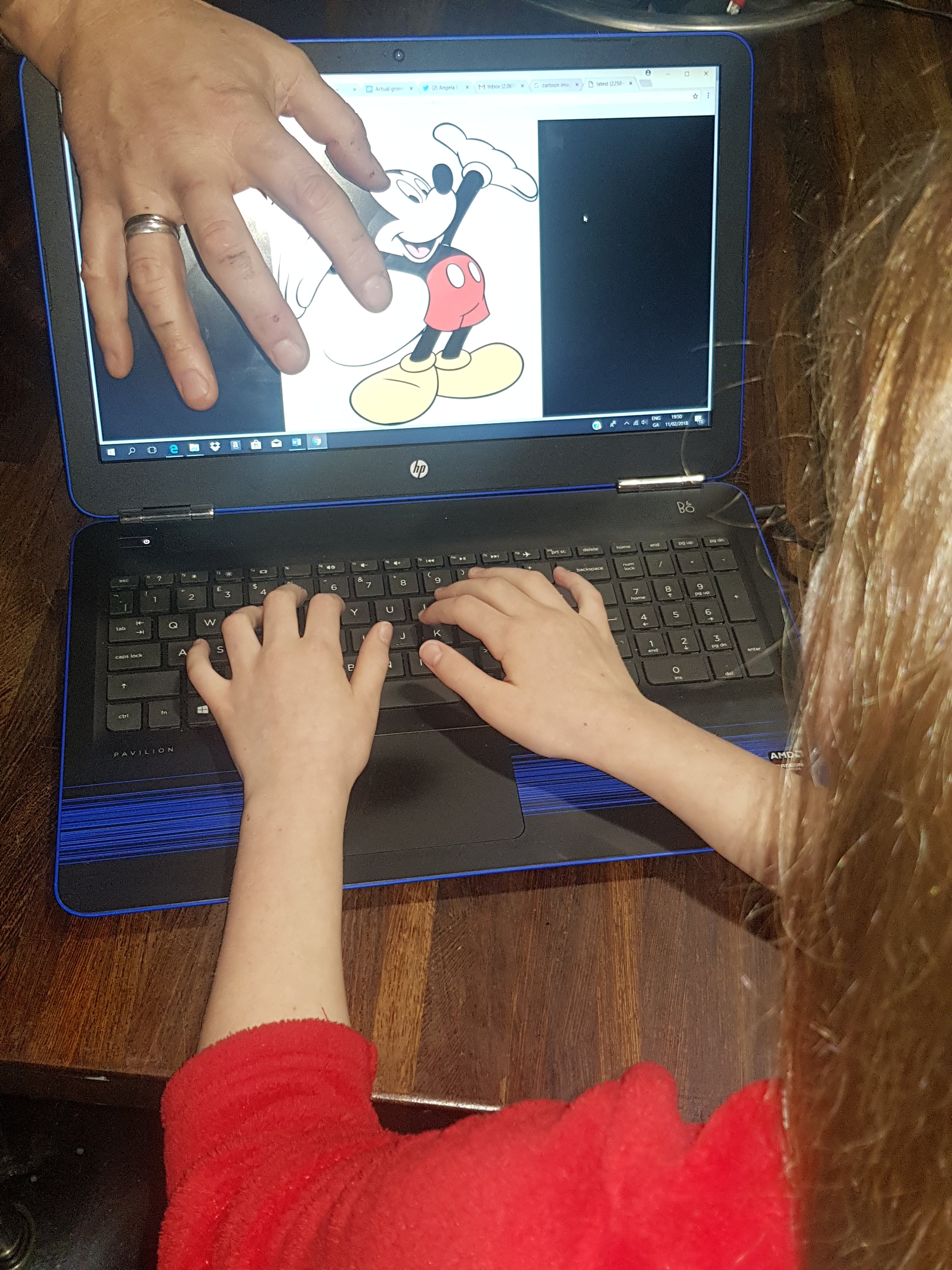
[dropcap]G[/dropcap]rooming is the common term used to explain how a sexual predator draws a child into their trust, with the core objective; to meet the child in the real world to commit sexual abuse.
Online, one to one, in dark corridors or behind closed doors on endless nameless avenues, sexual predators exist, and sexual abuse happens, has happened, and will continue to happen.
Michael Moran is a UCD lecturer, a member of An Garda Síochána, and a board member of Cybersafe Ireland: “We know the internet will always be, ultimately, a communications technology. The different social or communication platforms don’t matter, even if you took away all those platforms the communications technology will always be there, and by the same rule it will always be open to abuse.”
Predators use a myriad of methods from coaxing to blackmail to elicit trust from their victims. The victims meanwhile learn quickly to hide tell-tale elements of distress or fear, knowing to reveal the abuser’s identity puts them in danger.
Many people believe the connection between grooming and the internet are solidified; one does not exist without the other.
Others believe a digital age of consent can eradicate danger. This may be a positive step, but it does not provide the all-consuming answer.
It cannot be dismissed that the reach of the sexual predator has been facilitated with the increased ability to operate in a far more pervasive, insidious, and hard- to-detect fashion, due to the operational nature of the world wide web.
Pedophile Hunters – Vigilante Groups
In recent months the increase of so called vigilante groups who create ‘Stings’ using fictitious identities, purporting to be underage children, appear to be gaining support on social media.
Their methods, while perhaps an understandable reaction, are not supported by authorities.
An Garda Síochána says: “The actions by such groups are a cause of concern for An Garda Síochána and for other police services. The activity engaged in and the manner of confrontation between such groups and their targets has the potential for violence and could result in harm to persons present. In addition, there are also concerns over the legality of the actions of such groups operating in Ireland. Finally, the manner in which such groups operate and how they interact with their chosen targets prior to and during the arranged meeting has the potential to affect future criminal proceedings.”
According to Moran: “Vigilante groups are perhaps a response to the lack of our regular mechanisms to deal with these issues, and the lack of regulation by the platforms running on the internet.”
However, it does not address the bigger issue of what society is doing about people who have a sexual preference for children.
So far it seems that the judicial system takes each case based on the merit of the crime. The sexual deviancy dictates the sentence. Who decides which form of sexual abuse leaves the most scars or causes the most harm to a child?
The United States Sentencing Commission in 2015 completed an investigation into child pornography distribution rings which operate on the Internet.
Findings, in relation to recidivism rates were calculated on a sample group of offenders from 1999 to 2000.
The report states: “In evaluating any recidivism study, particularly one involving sex offenders, caution should be exercised because the known recidivism rate is lower than the actual recidivism rate.
The Commission tracked the 610 offenders during an average eight-and-one-half year follow-up period after their re-entry into the community and found a rate of known general recidivism of 30.0 percent.
Figures from the central statistics office (CSO) show in the last ten years in Ireland, the rate of sexual offences has risen by over 1000 cases.
Recidivism rates for sexually motivated crimes for Ireland are not collated for recent years.
While not all cases are categorised as child sex abuse, the rise of predators, who operate in virtual freedom with access to bedrooms and the safety of anonymity, has not gone away.
USA Reports
The US commission investigation shows clearly and conclusively that child pornography victims are harmed initially during the production of images. The perpetual nature of child pornography distribution on the Internet causes significant additional harm to victims: “Many victims live with persistent concern over who has seen images of their sexual abuse and suffer by knowing that their images are being used by offenders for sexual gratification and potentially for “grooming” new victims of child sexual abuse.”
This forms part of the crux of the issue for those who believe the worst harm that can come to a child who encounters a sexual predator on the internet is that they encounter ‘chat’ of a deviant nature.
Children will be asked to take photographs or record video of themselves, they will be asked to share these images, in many cases they share it never imaging the consequences.
The bond has been established, based on whatever psychology he (mostly he) has used to establish it.
Parental Responsibility
Parents too have trust; that their child will never send images or allow themselves to be coerced by some deviant. In many cases children believe they are talking to a charming young man, young girl, a peer, not the cold soulless monster who has baited them into a corner. By then it is too late, the blackmail is inherent, and the predator has achieved his goal.
Apart from Vigilante groups, surely there is a parental responsibility when it comes to how children are allowed access the internet and where they go once they get there?
Cybersafe Ireland CEO Alex Cooney says: “It’s vital that parents are aware of how easy it is for adults with a sexual interest in children to contact children through social media and messaging apps and online games. It is all too easy to be anonymous online. We would urge parents to engage in their children’s online lives by informing themselves, having regular conversations, setting rules and keeping a watchful eye. We also need investment in education to ensure that children are equipped to deal with online risks.”
Moran notes that there will always be other ways of policing these situations: “The vigilante groups are only a response, but prevention, repression, as well as education are all sadly lacking in this area.”
According to American Forensic psychiatrist Dr. Michael Welner, predators will seize up the child’s vulnerability: “Emotional neediness, isolation and self-confidence. Children with less parental oversight are more desirable prey.”
However, going off the presumption that most parents would not allow a 9-year-old to wander the streets of a city late at night alone, why then do they feel the internet is a safe place?
Moran says: “The naivety of a parent to allow a 9-year-old have unfettered access to the internet or any social platform is one of the huge problems we are facing from a prevention point of view. Parents are abdicating parental responsibility of parenting. They must realise the insidious nature of the internet itself, which in my opinion is driven by the capitalist model to make money while keeping eyeballs online.”
Ultimately it goes deeper than that. Since technology is only advancing, how do we put measures in place for future generations of children regarding internet safety?
According to Moran, the desire to keep children addicted to the internet at a younger age is what drives the industry and it is raw capitalism in the driving seat: “The companies need to get kids online as young as possible and they need to keep them there. In our history, this is the first-time industry is allowed access to children in a manner which has never been seen before.”
Former Facebook and Google employees have created, the Centre for Humane Technology, their aim to fight against the machine.
They have teamed up with media watchdog Common Sense Media to: “highlight the ill effects associated with the very social networks they helped create.”
As part of their first campaign, titled The Truth About Tech, the group will target 55,000 U.S. public schools to warn students, teachers and parents about tech addiction and smart media choices.
An Garda Síochána says it’s primary role is to investigate crime and enforce enacted legislation. They urge anyone with information relating to the potential sexual exploitation of children to report it immediately to An Garda Síochána where it will be investigated by professional investigators.
The advice from those who have seen the deviancy of cyberspace, is to be educated, and to educate.
Grooming is the common term used to explain how a sexual predator draws a child into their trust, and while the internet is not a bad place; it has the propensity to allow bad situations to occur.
There are always deviants, and with open content sharing there will always be monsters; now they don’t only lurk under the bed.
Cybersafe Ireland: info@cybersafeireland.org
One in Four Ireland : 01-6624070


